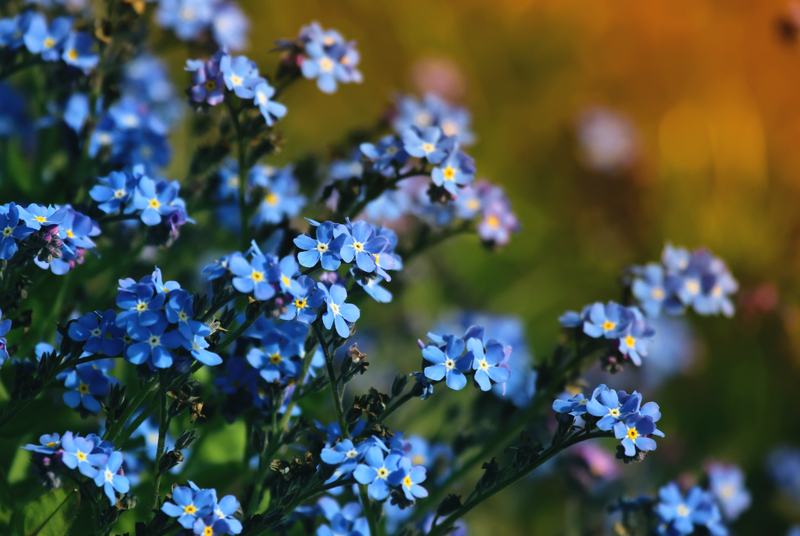Unlock the Beauty of Perfect Orchid Care
Posted on 14/06/2025
Unlock the Beauty of Perfect Orchid Care: Your Ultimate Guide
Orchids are nature's gems, renowned for their exotic allure, dazzling variety, and delicate beauty that can illuminate any space. Unlocking the beauty of perfect orchid care may appear daunting, but with the right knowledge and dedication, anyone can cultivate thriving, blooming orchids at home. This comprehensive guide covers essential strategies, pro tips, and best practices to help both beginners and seasoned enthusiasts nurture exquisite orchids all year round.

Why Orchids Captivate Gardeners Worldwide
Orchids are among the largest, most diverse groups of flowering plants on earth, with over 25,000 naturally occurring species and thousands of hybrids. Their blossoms, available in every imaginable color and shape, evoke admiration and fascination. Perfect orchid care not only ensures their longevity but also maximizes their striking beauty.
- Stunning diversity in colors, forms, and scents
- Symbolism - Orchids represent luxury, refinement, and rare beauty
- Longevity - Proper care allows many orchid species to rebloom yearly
- Air purification - Orchids can improve indoor air quality
Choosing the Right Orchid: The First Step to Success
The journey to unlocking orchid beauty starts with selecting the right species or hybrid for your environment. Some orchids are more forgiving for beginners, while others may require advanced expertise. Consider the following popular varieties for indoor cultivation:
Best Orchids for Beginners
- Phalaenopsis (Moth Orchid): Resilient, long-blooming, and widely available
- Dendrobium: Gorgeous blooms, tolerant of a range of conditions
- Cattleya: Iconic frilled flowers with a lovely fragrance
- Oncidium: Prolific, "dancing lady" blossoms, easy to rebloom
Tip: Purchase orchids from reputable retailers and inspect for healthy, firm leaves, robust roots, and no visible pests or diseases.
The Fundamentals of Perfect Orchid Care
To unleash the full potential of your orchids, master the fundamentals of light, water, humidity, temperature, and nutrition. Each element plays a critical role in plant health, vigor, and flower production.
1. Light
- Bright, Indirect Light: Most orchids, especially Phalaenopsis, thrive in bright but indirect light. East or west-facing windows are best.
- Leaf Color Indicator: Healthy orchid leaves should be light to medium green. Dark green indicates too little light, while yellowish leaves mean too much sunlight.
2. Watering
- Water Wisely: Orchids prefer to dry out slightly between waterings. Overwatering is a common mistake and can cause root rot.
- Best Practice: Water thoroughly, allowing excess water to drain. Water frequency depends on species, potting mix, container type, and humidity - generally once every 7-14 days.
- Tip: Use tepid, non-chlorinated water or rainwater for best results.
3. Humidity
- Ideal Range: Orchids enjoy 40-70% humidity. Dry indoor air, especially in winter, can be mitigated with humidifiers, humidity trays, or groupings of plants.
- Misting: Daily misting can help, but avoid wetting the crown or flowers to prevent rot.
4. Temperature
- Day/Night Difference: Most orchids need daytime temperatures of 65-80?F (18-27?C) and nighttime drops of 10-15?F. This diurnal variation promotes flowering.
- Draft-Free: Avoid cold drafts or sudden temperature spikes.
5. Fertilization
- Balanced Orchid Fertilizer: Use a balanced (20-20-20) fertilizer diluted to half strength every 2-4 weeks during the growing season.
- Flush: Monthly flushing of the potting mix with plain water prevents salt buildup.
Orchid Potting Media and Containers
Unlike traditional houseplants, orchids rarely grow in soil. Their roots crave air and proper drainage. Select a potting media and container suited to your orchid type:
- Pine Bark & Sphagnum Moss: Promote airflow and moisture retention
- Coconut Husk Chips: Sustainable, long-lasting choice
- Perlite or Charcoal: Enhance drainage, prevent compaction
- Slotted Plastic Pots or Clay Orchid Pots: Encourage root aeration and water drainage
Repot every 1-2 years, or when the media breaks down. Tip: Repot after flowering, not during blooming, to minimize stress.
Advanced Orchid Care: Reblooming and Pruning
Coaxing your orchid to rebloom is a hallmark of perfect orchid care. After flowers fade:
- Phalaenopsis (Moth Orchids): Cut the spent flower spike just above a visible node (joint) to potentially encourage a side spike and new flowers.
- Other Types: Completely remove the spent spike to allow the plant to focus energy on new growth.
- Nourish: Continue regular care; provide slightly stronger light and cooler nights to signal reblooming.
How to Prune Orchids for Maximum Health
- Use sterilized scissors or trimmers to avoid spreading disease
- Remove dead or withered roots and leaves
- Always cut at an angle and avoid damaging healthy tissues
Common Orchid Care Mistakes and How to Avoid Them
Even experienced orchid enthusiasts sometimes stumble! Here are pitfalls to avoid as you strive for perfect orchid care:
- Overwatering: Causes root rot and dieback; always check media moisture before watering.
- Too Much Direct Sun: Leads to leaf burn; provide filtered light.
- Poor Ventilation: Stale air encourages pests and disease; ensure good air circulation.
- Neglecting Repotting: Old media suffocates roots; repot as needed.
- Ignoring Pests: Mealybugs, spider mites, and scale can quickly damage or kill an orchid. Inspect plants weekly.
Troubleshooting: Orchid Pests and Diseases
Vigilance is key to maintaining flourishing, beautiful orchids. Some common issues include:
- Mealybugs: Cottony pests on leaves/stems. Wipe with alcohol-soaked cotton swab.
- Scale: Hard, shell-like insects; treat with insecticidal soap or horticultural oil.
- Root Rot: Mushy, black roots. Unpot, trim dead roots, and repot in fresh media.
- Leaf Spots: Fungal/bacterial infections. Remove affected tissue and enhance air flow.
Encouraging Orchid Blooms: Tips for Spectacular Flowers
With proper orchid care, your plants can bloom every year, sometimes several times a year. Try these expert secrets to unlock amazing orchid flowers:
- Lighting: Provide maximum safe light exposure during the growing season.
- Temperature Drop: Lower night temperatures by 10-15?F for a few weeks to initiate flowering.
- Proper Feeding: Use a "bloom booster" fertilizer (higher in phosphorus) as flower buds begin to form.
- Rest Period: Some orchids, like Dendrobiums, require a dry, cool rest after blooming to reinitiate flowering.
Displaying Orchids: Make the Most of Their Beauty
Not only should orchids be healthy and blooming - they should also be displayed to their full decorative potential!
- Place orchids in eye-catching ceramic or decorative cachepots for added elegance.
- Group orchids with other indoor plants or arrange them on tiered stands for a lush, tropical effect.
- Rotate plants occasionally to encourage even growth and display their best side.

Frequently Asked Questions about Orchid Care
How often should orchids be watered?
Most orchids need to be watered every 7-10 days. Always let the potting medium slightly dry between waterings for perfect orchid health.
How do I know my orchid is getting enough light?
Perfect orchid care involves monitoring leaf color - healthy orchids have light green leaves, not deep, dark green (too little light) or yellowish (too much light).
What is the best temperature for orchids?
Orchids prefer temperatures between 65-80?F (18-27?C) during the day, with cooler nights. Some varieties may tolerate more extreme ranges, but rapid fluctuations should be avoided.
When should I repot my orchids?
Repot every 1-2 years, or as soon as you notice the potting media breaking down, roots growing over the side, or stagnant growth despite good care.
Do orchids need to be fertilized?
Yes, regular but diluted feeding is essential for optimal orchid health and blooming. Use a balanced fertilizer, reducing strength to avoid salt buildup.
Conclusion: Unlocking the Beauty of Perfect Orchid Care
From their sculptural leaves to their mesmerizing blooms, orchids offer an endless source of beauty and inspiration. By understanding their needs for light, water, humidity, and temperature, you can confidently keep your orchids healthy and encourage regular flowering. With a little dedication, patience, and the right techniques, the beauty of perfect orchid care is within your grasp.
Bring home an orchid, follow these care tips, and watch as your space transforms with living elegance and color. Unlock the stunning allure of orchids, and you'll be rewarded with exquisite blooms that last for years to come.
```
.jpg)

